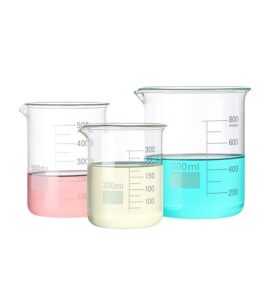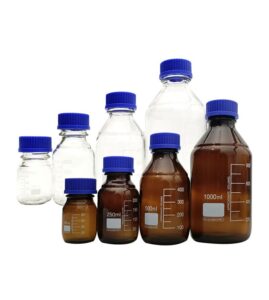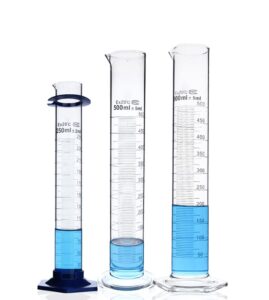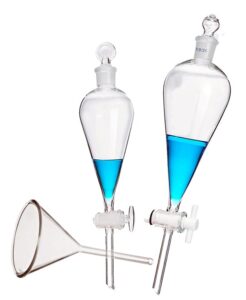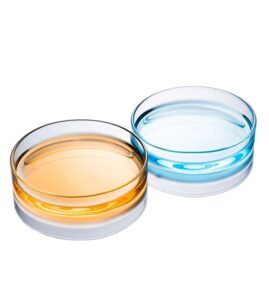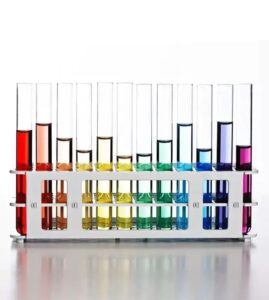Have you ever found yourself cringing at the sight of someone mishandling lab glassware, or worse, been guilty of it yourself? Lab glassware is not only fragile but also integral to the precision and safety of experiments. So, what makes the handling of lab glassware so critical, and why do bad habits persist among professionals and students alike?
Breaking bad habits in lab glassware handling is crucial for maintaining safety, accuracy, and the longevity of the equipment. These habits range from improper cleaning to using glassware for unintended purposes. Recognizing and correcting these habits can significantly improve laboratory practices.
Maintaining a keen awareness of these habits is the first step towards improvement.
What Are the Essential No-Nos in Lab Glassware Handling
Bad habits in lab glassware handling are surprisingly common, yet they can lead to serious consequences. Here are some essential no-nos that need addressing:
- Using cracked or chipped glassware: This not only poses a safety hazard but can also compromise the integrity of experimental results.
- Improper cleaning: Residue from previous experiments can cause cross-contamination. Using inappropriate cleaning agents can damage the glassware.
- Heating or cooling too rapidly: Sudden temperature changes can cause glass to break, posing safety risks and potentially ruining experiments.
- Using glassware for unintended purposes: This includes using beakers as storage containers or measuring cylinders for mixing chemicals.
Understanding these habits is crucial for anyone involved in lab work.
Navigating Common Misconceptions in Laboratory Glassware Handling
In the realm of laboratory science, precision and safety are paramount. The handling and usage of lab glassware are no different, with specific protocols in place to ensure experiments run smoothly and accurately. Within this context, certain practices must be adhered to, especially when dealing with commonly used items such as pipettes, burettes, measuring cylinders, and volumetric flasks. Each piece of glassware has its own set of rules to follow to avoid common pitfalls that can affect experimental outcomes.
Misconceptions in Selecting and Using Glass Containers
Accurately measuring the volume of solutions is a critical factor in achieving reliable analytical results in volumetric analysis. Therefore, it’s essential to use volumetric instruments correctly, such as burettes, pipettes, and volumetric flasks. However, several common mistakes often occur in practice:
- Failure to Distinguish Between Acid and Base Burettes and Their Performance: This mistake can lead to numerous errors since acid burettes, which have a glass stopcock at the bottom, cannot hold alkaline solutions due to the corrosion of glass by the alkali, affecting the movement of the piston. Conversely, base burettes, which are fitted with a rubber tube at the bottom, cannot hold acid or oxidizing solutions as these substances can corrode rubber.Before filling the burette with the standard solution, it should not be rinsed 2 to 3 times with 5mL to 10mL of the said solution, slowly rotating the burette with both hands to ensure the standard solution flows through the entire burette and out the bottom to remove any residual water before adding the solution for titration. Failing to do so can dilute the concentration of the standard solution.Burettes should be selected based on the volume of standard solution required for titration. For amounts less than 10mL, micro burettes of 10mL or 5mL should be used. For volumes between 10mL and 20mL, a 25mL burette is appropriate, and for volumes exceeding 25mL, a 50mL burette should be used. In practice, not paying attention to these details and using incorrect burette sizes can cause significant errors.
- Incorrect Use of Volumetric Flasks: Volumetric flasks are commonly used to measure and prepare solutions to a specific volume. However, they are sometimes improperly used for long-term storage of solutions, especially alkaline solutions, which can corrode the glass and cause the stopper to stick, making it impossible to open. Prepared solutions should not be stored in volumetric flasks but transferred to reagent bottles for storage, which should be rinsed 2-3 times with the prepared solution beforehand.
- Failing to Calibrate Volumetric Instruments Regularly: Sometimes, the marked value does not correspond to the actual volume, leading to volume errors and systematic discrepancies. It is generally recommended to calibrate these instruments every six months.
- Unfamiliarity with the Capacity Tolerance and Standard Volume Levels of Different Measuring Instruments: The capacity tolerance varies among different types of volumetric instruments, leading to errors if an inappropriate instrument is chosen. For accurate volume measurements, pipettes and burettes should be used instead of measuring cylinders and beakers, which can introduce inaccuracies.
Common Mistakes in Basic Laboratory Operations
- Improper Storage of Reagents: Not understanding the properties and uses of reagent bottles can lead to errors, such as not following the principle of storing solid reagents in wide-mouth bottles and liquid reagents in narrow-mouth bottles, using glass stoppers for acidic substances, rubber stoppers for alkaline substances, and brown bottles for light-sensitive substances (e.g., AgNO3, I2 solutions). This can result in impurities or changes in formula weight, causing errors. When using reagents, failing to place the bottle stopper upside down on the bench, as prescribed, can lead to reagent contamination and affect the accuracy of the results.
- Using Weighing Bottles Incorrectly: Not drying weighing bottles at 105°C before use and allowing them to cool to constant weight can lead to inaccuracies. Directly handling a dried weighing bottle with hands instead of using clean paper to hold it can cause contamination and affect the accuracy of weight measurements.
- Filling Burettes with Standard Solutions: Using a funnel or another container to fill the burette can change the concentration of the standard solution or contaminate it. Not adjusting the liquid level to 0.00 before each measurement and not waiting 1-2 minutes after titration for the solution adhering to the inner wall to flow down before reading can cause volume errors. Titrating too quickly, causing the solution to flow out like water, especially near the endpoint without slowing down, can lead to overshooting the endpoint and errors in the analysis. For colorless or light-colored solutions, not keeping the eye level with the lowest point of the meniscus inside the burette; for colored solutions, not aligning the eye level with the highest point on both sides of the liquid level can also result in volume errors.
- Incorrect Use of Pipettes: When using a cleaned pipette for the first time, not wiping the tip inside and out with filter paper, and then not rinsing the pipette 2-3 times with the solution to be measured can lead to changes in the concentration of the transferred solution. When transferring a solution, the pipette should be held with the right thumb and middle finger above the neck marking, and inserted into the solution neither too deep (which can cause excess solution to adhere to the outside, affecting accuracy) nor too shallow (which can cause air to be drawn in). The pipette should be inserted vertically down the side of the container to let the solution flow down naturally along the container wall, wait for 10-15 seconds after transferring, and do not blow out the residual liquid at the tip because the calibration of the pipette already accounts for this volume. Failure to adhere to these practices can result in volume errors and affect the accuracy of the results.
Misconceptions and Misuses in Heating Glassware
- In practical work, some people often overlook or are unclear about which instruments can be heated, leading to mistakes. Instruments like measuring cylinders, beakers, volumetric flasks, and reagent bottles should not be directly heated and should be selected with care.
- When heating glassware, placing the container directly on an electric heater instead of on an asbestos net can cause uneven heating and may even lead to the container bursting.
- During use, if the temperature changes too drastically, such as cooling a hot glass container suddenly or placing it directly on a tabletop instead of on an asbestos net as prescribed, it can cause the container to crack, resulting in the loss of reagents and affecting the normal progression of testing work.
- In actual practice, some people find it troublesome to use a desiccator correctly. For apparatus that needs to be accurately weighed after heating, it should be dried and then allowed to cool slightly (about 30 seconds) before being placed in a desiccator to cool to room temperature (which can take about 30 minutes). When placing warm apparatus in the desiccator, the lid should be left slightly ajar for a few minutes before being sealed tightly; and when moving the desiccator, it should not be lifted by the bottom alone but held securely by the lid to prevent it from slipping off, thus avoiding unnecessary loss.
Understanding and Avoiding Pitfalls in Glassware Usage
Pipettes are a staple in physiological and biochemical experiments for measuring liquid volumes. When using a pipette, it’s crucial to ensure it’s dry; otherwise, it should be rinsed 2-3 times with the solution to be measured to maintain the solution’s concentration.
- Ungraduated pipettes (including single-graduated and transfer pipettes) should not be blown out when dispensing liquid. Instead, wait for 3 seconds after dispensing and rotate the pipette to ensure the remaining drops are accounted for in the measured volume.
- Graduated pipettes come in several types: blow-out, complete drainage, and partial drainage. Each type requires specific handling to ensure accurate volume measurements.
- Complete drainage pipettes don’t require the residual liquid to be blown out. They come in slow and fast drainage types, with A and B precision grades, where A-grade pipettes should be allowed to drain for 15 seconds, and B-grade for 3 seconds before rotating to ensure no liquid is blown out.
- Blow-out pipettes are marked with “blow-out” instructions, requiring the user to expel the last drops by blowing.
- Partial drainage pipettes are distinguished by a 1 to 1.5 mm wide color band above the single or double ring. This is to differentiate them from the complete drainage pipettes.
Burettes allow for the accurate measurement of variable volumes of solution, crucial for volumetric analysis. Standard burettes come in 25 mL and 50 mL sizes, with a minimum scale of 0.1 mL, allowing estimations to two decimal places. Semi-micro burettes, used for very precise measurements, have narrower diameters and smaller drip sizes, with scales as precise as 0.01 mL to 0.02 mL, requiring longer waiting times for the solution to fully drain.
Measuring cylinders are not substitutes for pipettes or burettes. They are used for measuring larger volumes of liquid where precision is less critical. Solutions that do not require heating for dissolution can be prepared directly in cylinders equipped with glass stoppers.
Volumetric flasks are designed for accurate volume measurements at a specific temperature (usually 20°C). Before use, ensure the stopper does not leak and do not interchange them. Flasks should be clean to avoid water droplets above the calibration mark, which can affect accuracy. Any solid substance must be dissolved in a beaker before being transferred to the volumetric flask, and flasks should never be heated or dried in an oven.
The Pitfalls of Improper Disposal or Recycling of Laboratory Glassware
In the realm of laboratory management, the disposal or recycling of glassware represents a critical yet often overlooked aspect of safety and sustainability. Improper handling of this phase not only poses risks to human health and the environment but also contravenes principles of eco-friendly lab practices. Understanding the dos and don’ts of glassware disposal and recycling is pivotal in minimizing potential hazards and promoting a culture of responsibility.
Laboratory glassware, depending on its contamination level and composition, requires careful consideration before disposal or recycling. Contaminated glassware, for instance, must never be mixed with regular recyclables due to the risk of chemical exposure and pollution. The process begins with decontaminating the glassware according to the specific agents used in experiments. For glass items that cannot be cleaned or decontaminated effectively, proper hazardous waste disposal methods must be followed, adhering to local regulations and guidelines.
Moreover, not all laboratory glassware is recyclable in the conventional sense. Certain types of glass, such as borosilicate, used widely in labs for its thermal resistance, do not meld with common glass recycling processes. This necessitates segregation based on glass type, ensuring that recyclable materials are correctly processed, and non-recyclable items are disposed of in a manner that mitigates environmental impact.
The effective disposal or recycling of laboratory glassware demands a nuanced understanding of materials, contamination, and local environmental policies. Laboratories should strive to develop and implement comprehensive waste management protocols, emphasizing the safe handling of all materials. By doing so, we not only safeguard our immediate working environment but also contribute to broader environmental conservation efforts. Embrace sustainability in your laboratory practices by staying informed, diligent, and proactive in the disposal and recycling of glassware. Let’s lead by example, ensuring our scientific endeavors are not just groundbreaking but also green.
More on Breaking Bad Habits
The journey to breaking these habits involves more than just awareness. It requires a commitment to best practices and a thorough understanding of laboratory protocols. Here are some tips for breaking bad habits in lab glassware handling:
- Always inspect glassware before use.
- Follow proper cleaning guidelines, ensuring that glassware is free of residues and dried completely before storage.
- Gradually heat and cool glassware to avoid thermal shock.
- Use glassware as intended, respecting the limitations of each piece.
Adhering to these guidelines can dramatically reduce the risk of accidents and errors in the lab.
Implementing Best Practices
Implementing best practices in lab glassware handling is not just about avoiding the no-nos; it’s about cultivating a culture of safety and precision. This includes:
- Proper storage: Glassware should be stored in a way that prevents damage and contamination.
- Regular inspections: Regular checks for damage or wear and tear can prevent accidents.
- Education and training: Continuous education on the proper handling and care of lab glassware is vital.
By focusing on these areas, laboratories can improve safety and efficiency.
The Importance of Proper Training
One of the most effective ways to break bad habits in lab glassware handling is through proper training. Training should not only cover the basics of handling glassware but also emphasize the reasons behind these practices. Understanding the “why” can significantly impact how individuals approach their laboratory responsibilities.
- Regular workshops and refresher courses can help keep these practices top of mind.
- Hands-on demonstrations can illustrate the potential consequences of mishandling glassware, making the lessons more impactful.
Utilizing the Right Tools
Another aspect often overlooked is the importance of using the right tools for handling lab glassware. For example, using tongs or gloves when handling hot glassware can prevent burns and breakage. Similarly, employing the correct brushes for cleaning can prevent scratches and residue buildup.
- Investing in quality tools that are designed for laboratory use can prevent accidents and extend the life of glassware.
- Properly maintaining these tools is just as important as their use. Regular checks for wear and tear can ensure they are in good condition and safe to use.
Creating a Culture of Accountability
Creating a culture of accountability is key to breaking bad habits in lab glassware handling. When everyone in the laboratory understands their role in maintaining safety and precision, the likelihood of mishaps decreases.
- Encourage reporting of any incidents or near-misses. This not only helps in addressing any immediate safety concerns but also aids in identifying areas for improvement.
- Foster an environment where it’s okay to point out mistakes in a constructive manner. This can help prevent future errors and encourage a proactive approach to safety.
Leveraging Technology for Better Management
Technology can also play a significant role in managing lab glassware more effectively. Inventory management systems can track glassware usage, cleaning, and maintenance schedules, ensuring that everything is in top condition and available when needed.
- Barcode scanning systems can simplify tracking and reduce the chances of using damaged or contaminated glassware.
- Digital checklists and reminders can ensure that all steps for proper handling and maintenance are followed.
The Role of Continuous Improvement
Finally, breaking bad habits in lab glassware handling is not a one-time task but a continuous journey. Regularly reviewing and updating practices based on the latest safety standards and feedback from laboratory staff can lead to ongoing improvements.
- Engage with professional organizations and standards bodies to stay updated on best practices.
- Solicit feedback from team members about what’s working and what can be improved. This can provide valuable insights into new strategies for managing glassware more effectively.
Conclusion
Mastering lab glassware handling and embracing sustainable practices are not just about adhering to protocols—they’re about fostering a culture of safety, precision, and environmental responsibility. Let’s commit to breaking the cycle of bad habits, championing best practices, and pushing for continuous improvement. Together, we can elevate the standards of scientific research, ensuring our work not only advances knowledge but also protects our planet. Rise to the challenge, become a steward of safety and sustainability, and lead the way towards a greener, safer laboratory environment for all.


